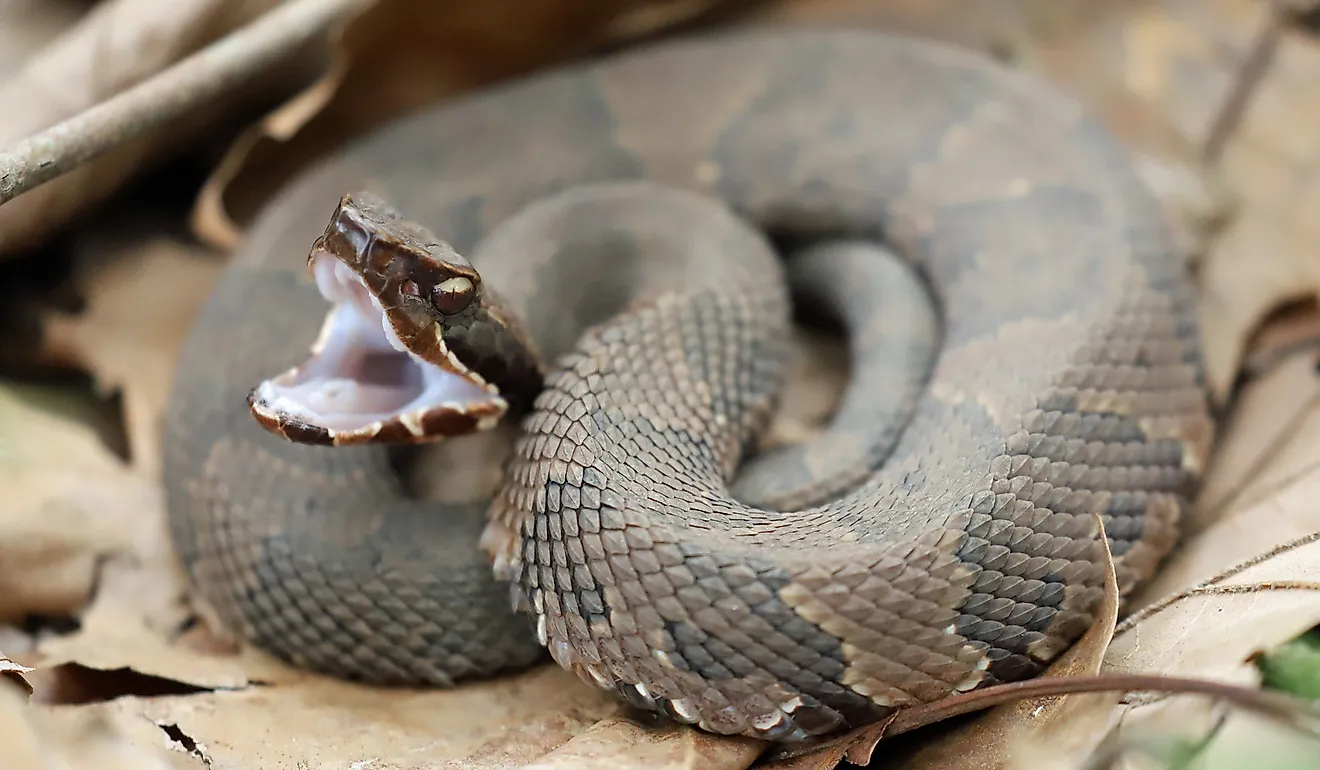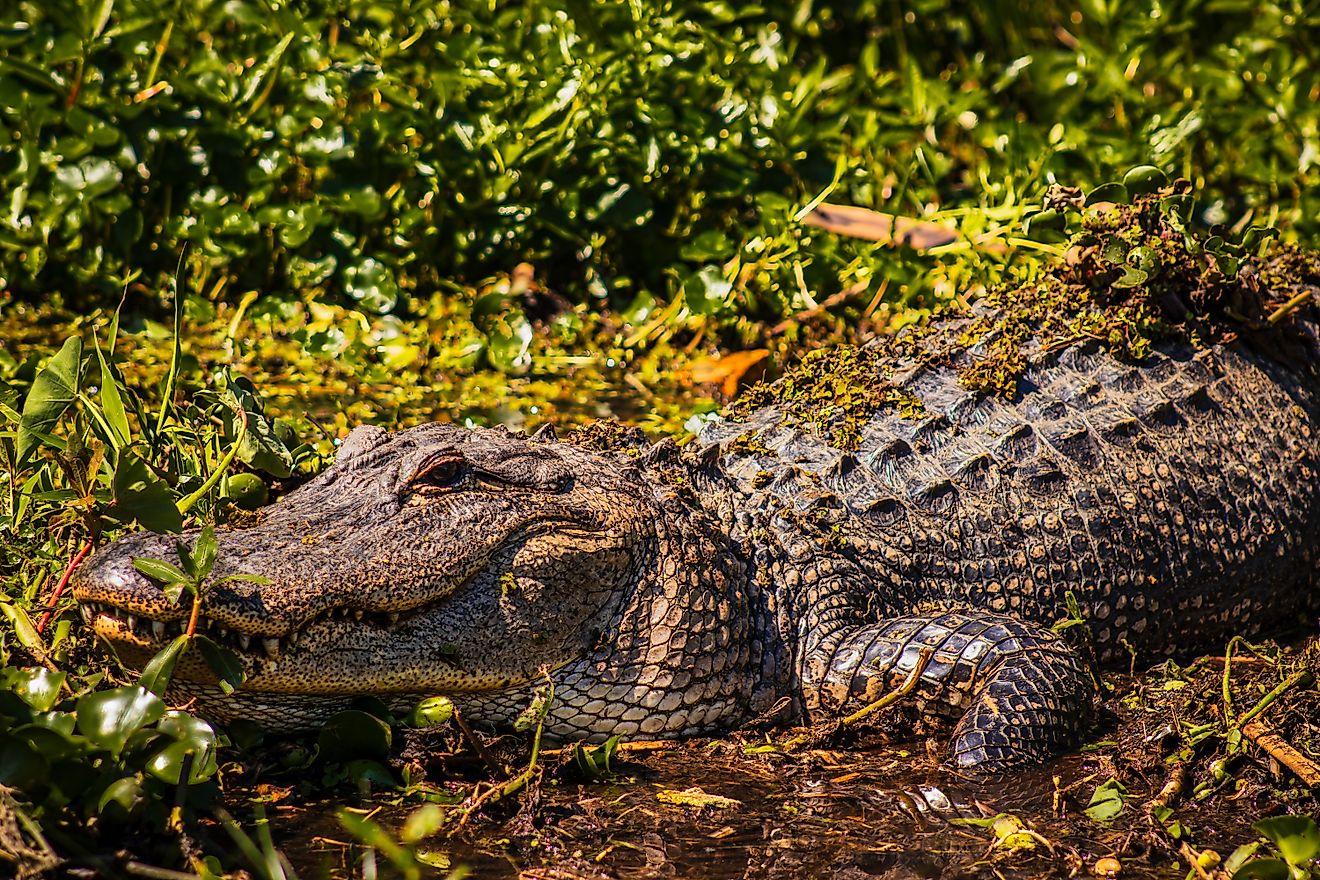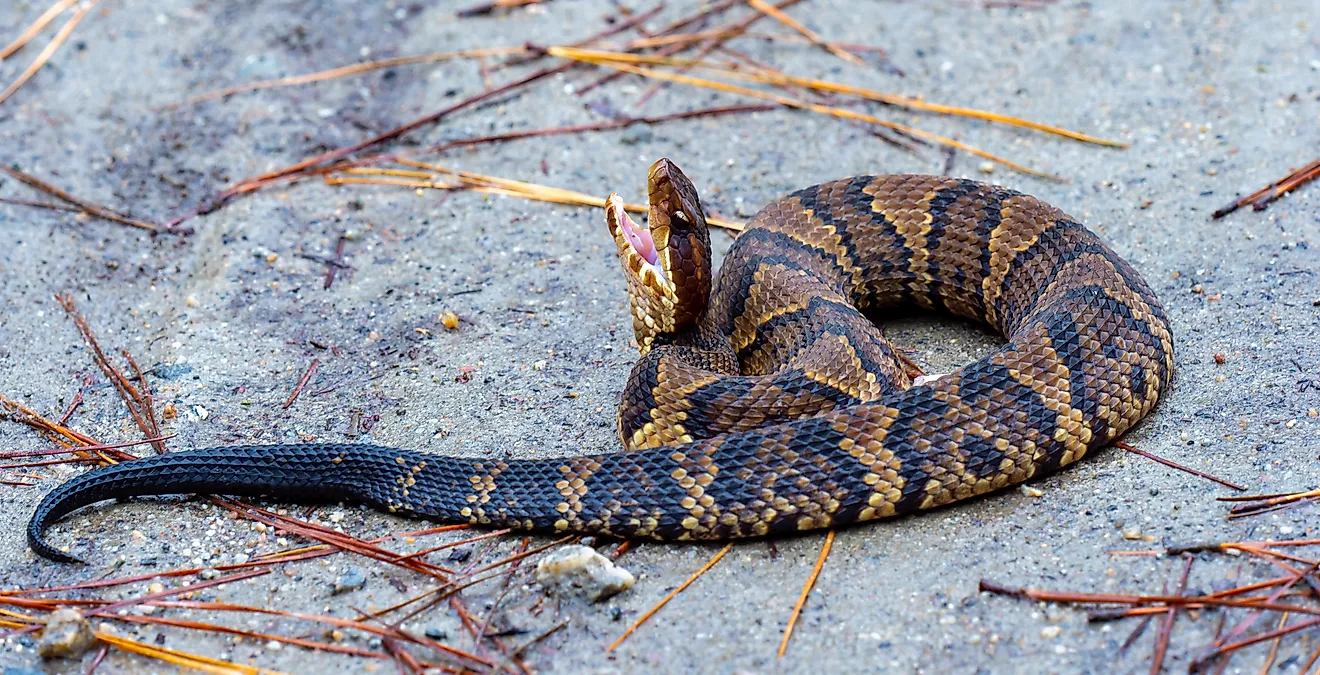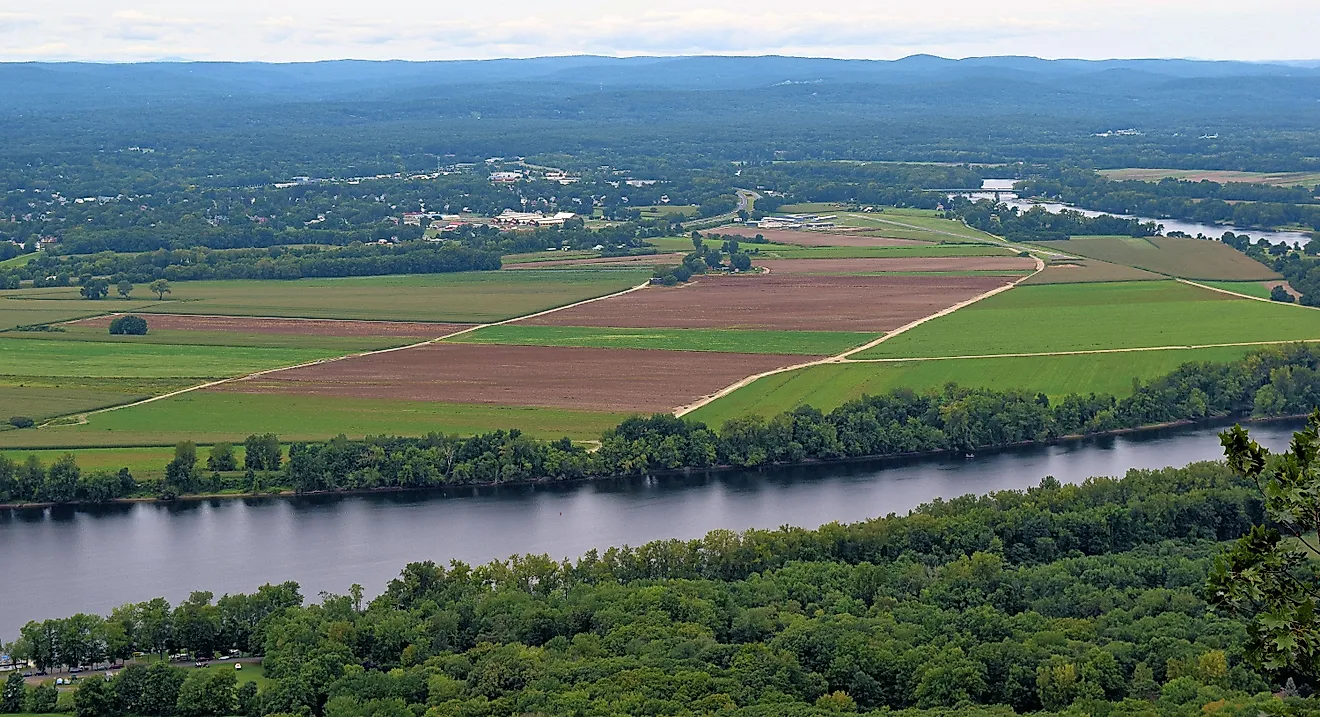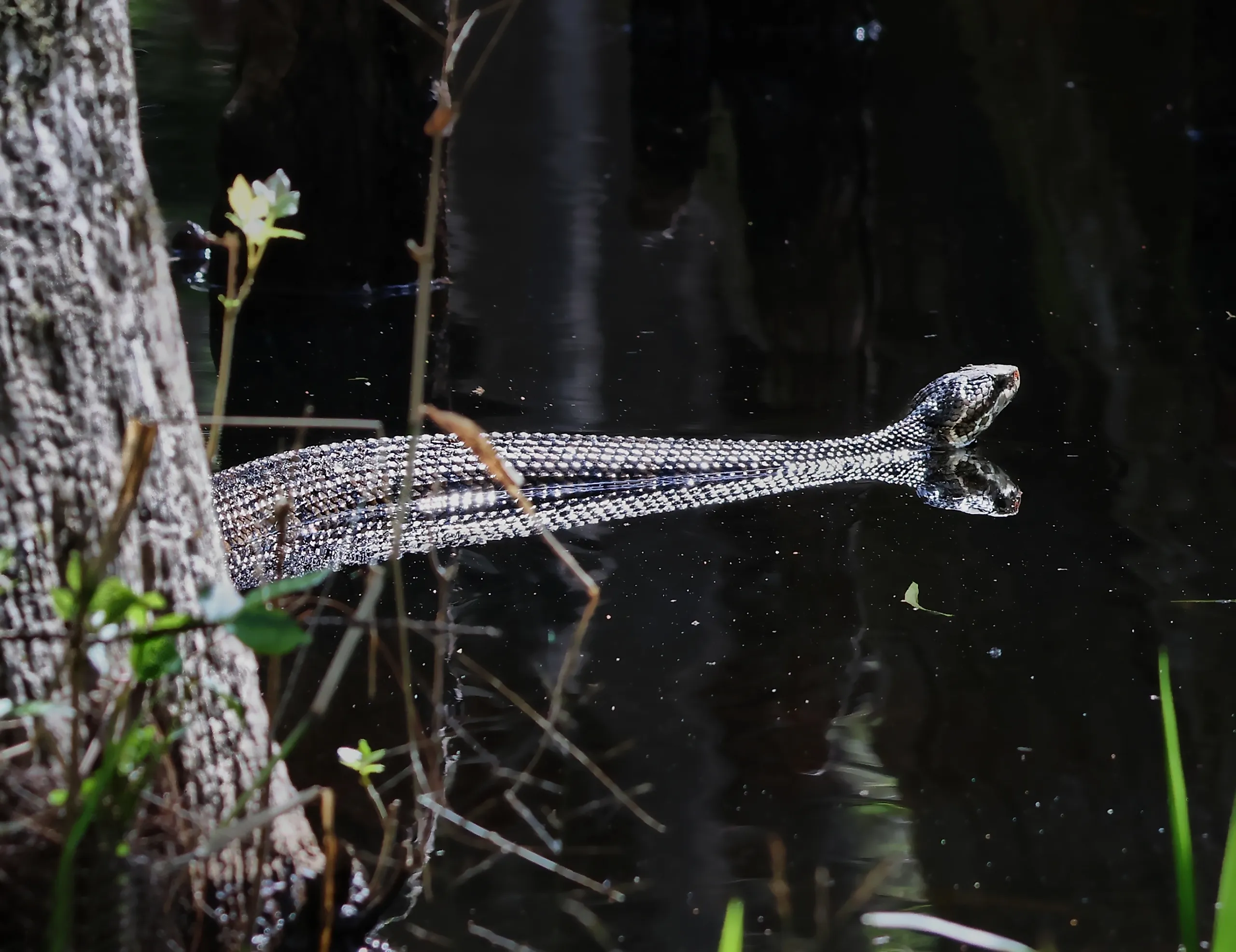
The 4 Most Snake Infested Rivers In Oklahoma
Watch out when traversing these Oklahoma riverways - there might be a slithering creature underfoot! Oklahoma’s drainage pattern is encompassed within two large drainage basins, those of the Red River and the Arkansas River, and their tributaries, which flow into Oklahoma from all six of the neighbouring states. The main tributaries of the Red River found in Oklahoma are the Salt Fork Red, North Fork Red, and Washita rivers, all of which contribute to Lake Texoma, the largest body of water in the state on the Texas-Oklahoma border. Other tributaries are: Muddy Boggy Creek, Kiamichi, and Little Rivers.
Oklahoma is home to a staggering 46 species of snakes, 7 of which are venomous. Out of that total number, almost half of them are either aquatic, semi-aquatic, or found near water in some form. These are the most snake-infested rivers in Oklahoma.
Red River
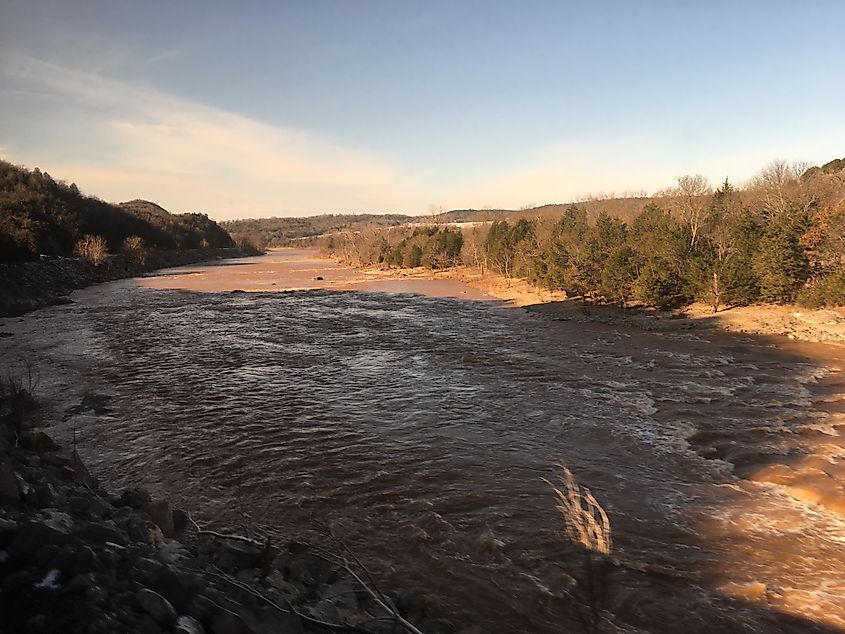
The Red River flows for a total distance of 1,290 miles, emptying into the Gulf of Mexico after a total distance of 1,290 miles. For around half of that distance, the Red River forms the boundary between Texas and Oklahoma.
Graham's Crayfish Snake (Regina grahamii) is a semi-aquatic snake found in the Red River drainage. Unlike other semi-aquatic snakes, which prey on small fish and amphibians, these snakes specialize in foraging burrows for recently molted, soft-bodied crayfish. Therefore, they are often found living in slow-moving bodies of water within the Red River drainage where they have access to abundant crayfish populations.

At the Red River, also look out for the Broad-Banded Watersnake (Nerodia fasciata), which is found in aquatic habitats across southeastern Oklahoma, reaching the central-southern part of the state along the Red River drainage. They are usually at the edge of bodies of water where it is shallow enough for them to hunt, or basking on vegetation overhanging water. They hunt underwater at night by holding their mouths open and moving their head back and forth, feeding primarily on fish, but have also been known to eat amphibians and birds.
Little River
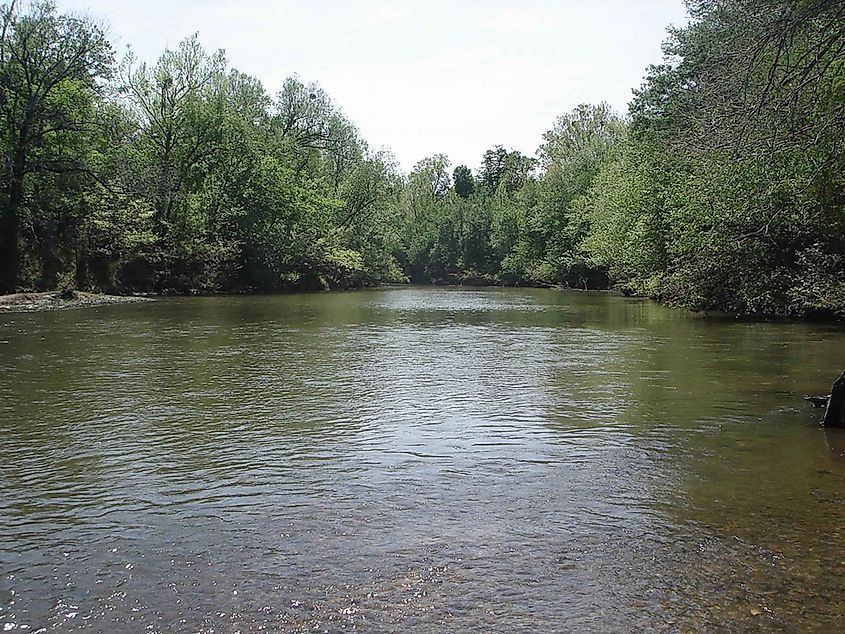
The Little River is a tributary of the Red River and flows for 220 miles. It rises in the Ouachita Mountains in southeast Oklahoma. It flows through Arkansas for ninety-two of its total 220 miles before emptying into the Red River. The Little River National Wildlife Refuge is located in the Little River's flood plain, which protects wetlands and migratory birds, fish, and wildlife. Various species of Oklahoma's wildlife inhabit the refuge, including 27 of its snakes.
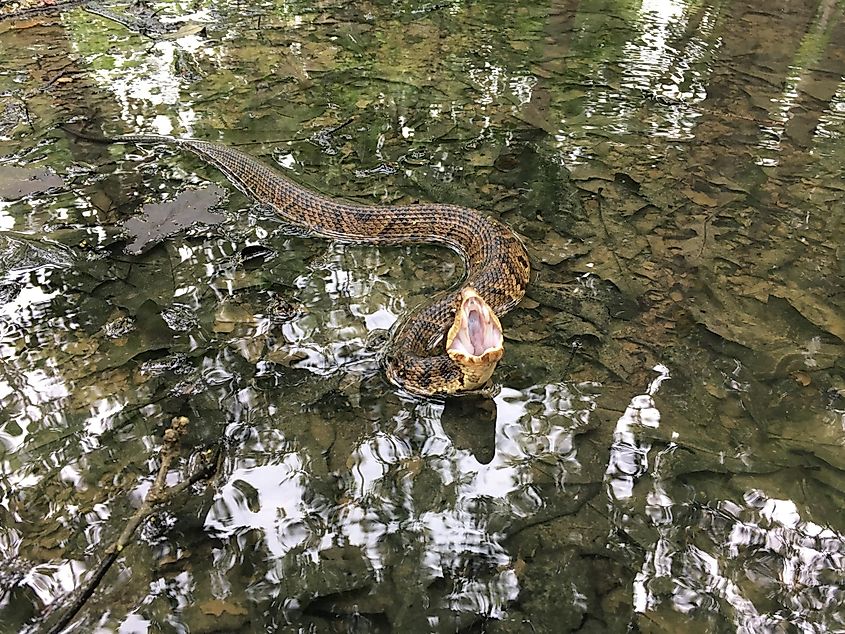
Many species of snakes inhabit the Little River, including four species of watersnakes and a couple of Oklahoma's venomous snakes. Portions of the Little River contain creeks, hardwood forests, oxbow lakes, and marshes, which are prime habitat for Water Moccasins (Agkistrodon piscivorus). They are particularly common in large swamps associated with rivers, but can be common along small streams, in ponds, and even in lakes. Adults of this species are seldom found far away from the water. They have a broad diet consisting of fish, rodents, birds, small mammals, frogs, lizards, and other snakes.
Kiamichi River
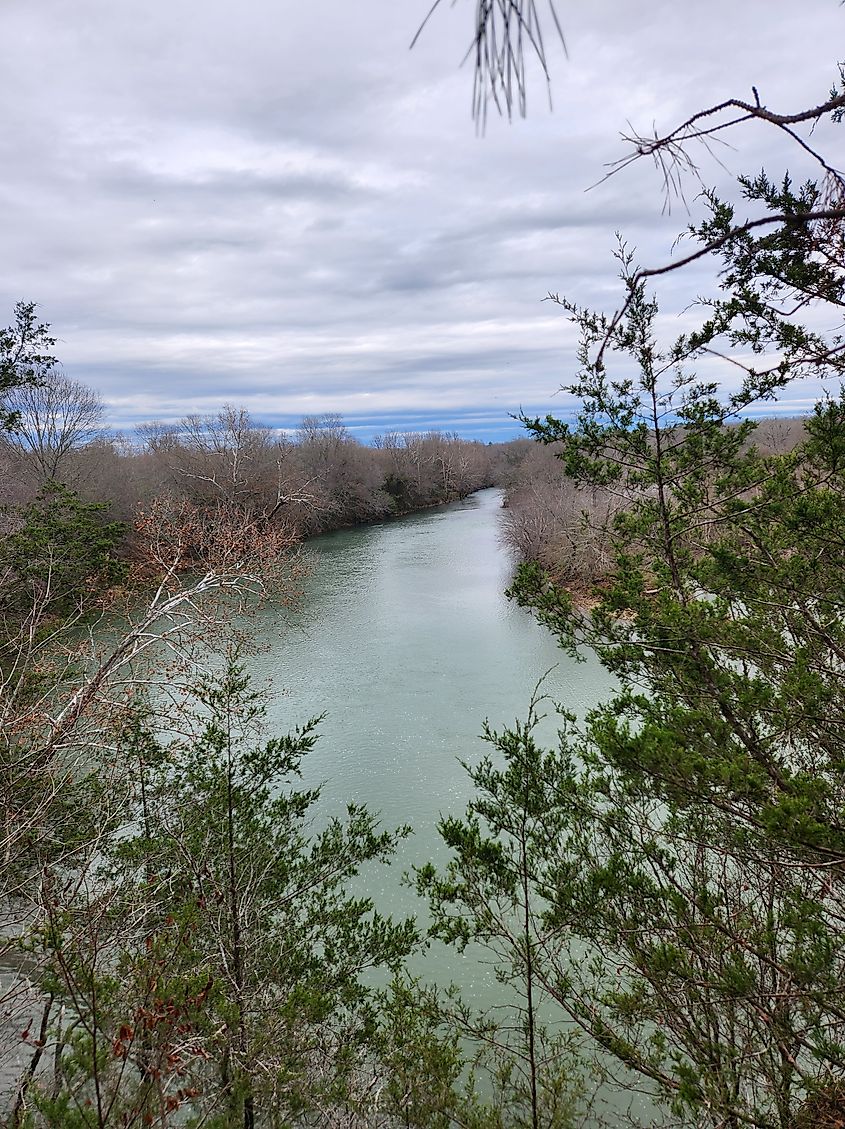
The Kiamichi River rises in Le Flore County, southeastern Oklahoma, near the Arkansas state border in the Ouachita Mountains. It flows southwest, past Pine Valley and Clayton, to Antlers, where it turns southeast and joins the Red River after a course of 165 miles.

The Northern Red Bellied Snake (Storeria occipitomaculata occipitomaculata) is known to inhabit woodland areas along the Kiamichi River. These snakes favour moist areas with plenty of cover, such as under rocks, logs, or vegetation. They are a small species of snake reaching lengths of only 10 inches and feed primarily on a diet of slugs, earthworms, and small insects. They are completely harmless to humans and may even curl up one or both sides of their upper lip if captured in an attempt to play dead.
Washita River

The Washita River rises in the Texas Panhandle in northwestern Texas, where it flows east across the Oklahoma boundary. From there, it moves from southeast Oklahoma to south-central Oklahoma, and south once again into Lake Texoma. The river is 295 miles long.
In the past, Copperheads (Agkistrodon contortrix) have been seen around and near the Washita River, especially during periods of extreme flooding. Usually, Copperheads are found near woodlands and rocky areas near streams and ponds. Three different species of Copperhead can be found in Oklahoma: the Broad-Banded Copperhead (Agkistrodon contortrix laticinctus), the Osage Copperhead (Agkistrodon contortrix phaeogaster), and the Southern Copperhead (Agkistrodon contortrix contortrix). Fortunately, the Copperhead’s venom is considered mild and is rarely fatal to people if medical treatment is promptly sought. These snakes are generally not dangerous unless cornered or threatened, and they prefer to escape without incident.
While Oklahoma has many different species of snakes found in and around these rivers, it is important to learn the difference between venomous and nonvenomous snakes. This will allow you to recognize other Oklahoma snakes as not dangerous, even though you may not be able to identify the species. Fortunately, identifying them is easy, as they all belong to the same family of venomous snakes: pit vipers. They are easily identifiable by a pit on each side of the head between and below the nostril and eye, which acts as a heat-sensing organ. That being said, if you are unable to confidently identify a snake, it is important to keep a safe distance.



